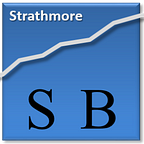Increase sales by applying the magic of merchandising
Two maxims you learn when you go shopping often: Don’t go shopping when hungry; and don’t go shopping without a shopping list. In both cases you’ll end up not only impulse buying but also more than you need.
The ability of major supermarkets to get you to buy more than you intended to or need is not a coincidence. They leave nothing to chance: colours, smells or product display. There is a whole science behind it called merchandising.
Even if you are not Nakumatt or Carrefour, there are still many tricks you can learn and apply in to your retailing business. In this article, we examine the basics of merchandising using the example of theof the food industry although the same logic applies in any retailing business.
Merchandising is the optimal design of spaces and display of products in such a way that it stimulates interest and entices customers to make a purchase. The major goal of merchandising is to offer the best possible shopping experience, that in turn translates into selling more and locking in clients.
Display
Display is everything in a supermarket. The fresh produce is at the front. Perishable products are the ones that make us visit the supermarket more often. People may go to the supermarket just to buy bread. So bread serves as a hook. If it is not placed at the entrance, a person will likely go to a bakery and not go through the whole supermarket just to look for bread. Research has shown that the quicker a customer puts anything in a trolley, the higher the chances that s/he will buy something more. Even touching a product increases the chances of buying it by 75%.
The essentials at the end
Why are milk, oil or toilet paper always in the remotest corner? Because these are the typical articles from the shopping list that we will go looking for and buy in any case. But, as opposed to the fresh produce, they don’t force us to visit the supermarket on a daily or weekly basis. The back of the shop is a so-called “cold zone” where the essentials are placed — things that are necessary and that we buy rationally. Very specialized products like international foods, products for diabetics or solid brands with a high level of loyalty, are all placed in the back, because consumers are likely to go an extra mile searching for them.
Impulse purchases next to the tills
Chewing gum, chocolate bars, sweets, batteries — tempting and small in price and size — are often put next to the till. Checkout is the moment when a customer can be most easily influenced. The client is exposed to the products the longest while s/he is waiting to pay. It triggers the last minute impulse purchases. The categories are usually pleasure-provoking and make the last impression of shopping positive. It allows us to pamper ourselves, a reward after the strains of shopping.
Potato chips next to soft drinks
Complementary products, like chips and soft drinks, tooth brushes and tooth pastes, tomato paste and pasta, are displayed next to each other, because they tend to be consumed together. This way planned purchasing is avoided and the chances of impulse buying increase.
Promotions and surprise displays
In any shop there are “hot” zones with the heaviest client traffic flow. Aggressive promotions are placed there.
Fight for the best place
Brands fight — and pay — for the best, the most visible display. Experts confirm that the products placed at eye-level have the biggest chances to end up in the trolley. However, it is not as general as it seems. The “most visible” place will depend on the product type, size of packaging and its design. For example, yogurts with all the information on the colorful lid (like flavor and expiration date) should be placed a little bit lower, so that the consumer sees the lids without having to take off the cup off the shelf.
Products’ rotation
Something twhat really disturbs the consumers is when the supermarket decides to rearrange the products, just when they have learnt where to find this or that product. This is intentional as it exposes the customer to new products while they are looking for the usual ones. However, don’t overdo the changes or make them too often as you might end up losing customers.
Seasonal promotions
Christmas seems to begin ever earlier. You may see Christmas decorations as early as November. The seasonal cycle is very important in retail. There are plenty of occasions of every possible nature: religious, national, traditional, back to school, Halloween, Ramadhan, Christmas, Diwali, St Valentines, Easter, beach-time, etc. They all reinforce the emotional side of shopping and increases sales.
